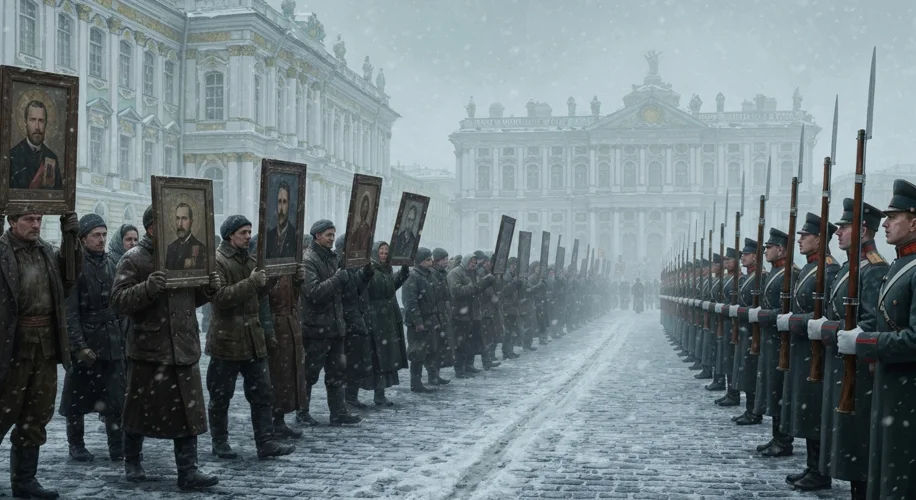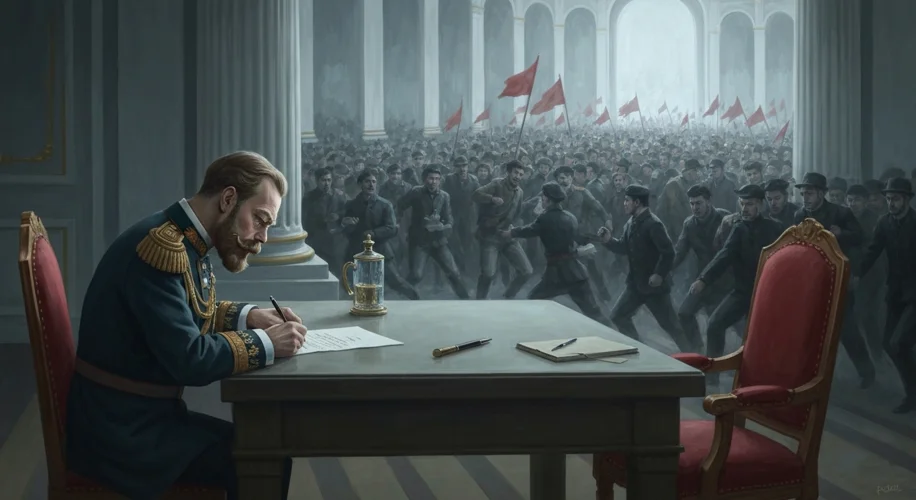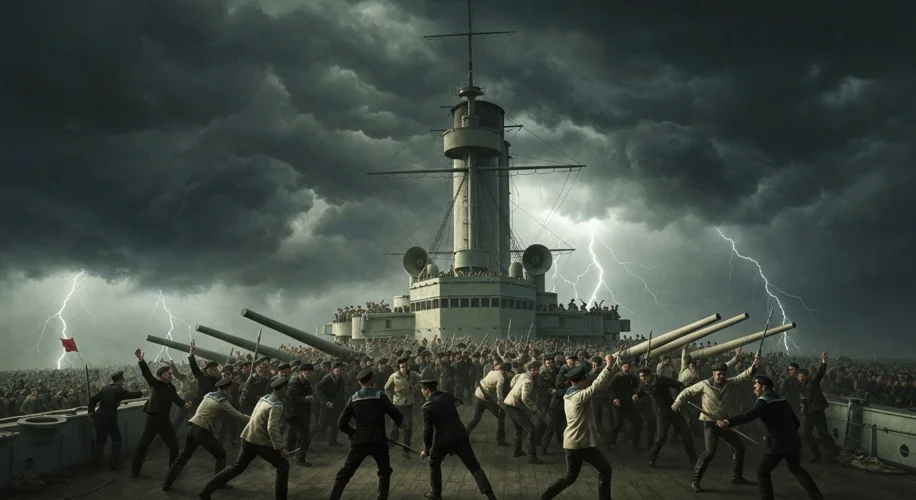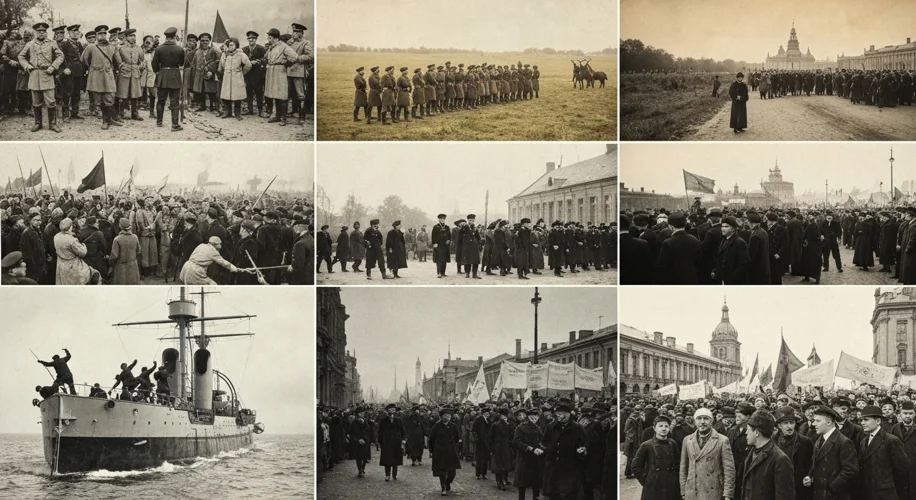The air in Russia on January 22, 1905, crackled not with anticipation of a new dawn, but with the chilling bite of a winter wind and the ominous rumble of an approaching storm. Thousands of workers, led by Father Georgy Gapon, a priest who had become a voice for the voiceless, were marching towards the Tsar’s Winter Palace in St. Petersburg. They carried icons, portraits of Tsar Nicholas II, and humble petitions, seeking his intervention against the crushing poverty and injustice that plagued their lives. Yet, instead of a paternal audience, they were met with a volley of rifle fire.

This brutal act, forever etched into history as “Bloody Sunday,” was the spark that ignited the tinderbox of Russian discontent. For years, the autocratic grip of the Tsarist regime had been tightening, suffocating any whispers of reform. The vast majority of Russia’s population, peasants bound by poverty and lack of land, and a burgeoning industrial working class toiling in appalling conditions, felt the heavy hand of the Romanov dynasty. The Tsar, Nicholas II, a man perceived as weak and out of touch, clung desperately to his divine right, oblivious to the seething resentment brewing beneath the surface.
The Russo-Japanese War (1904-1905) proved to be the catalyst that shattered any remaining illusions of the Tsar’s competence. Humiliating defeats on the battlefield exposed the rot within the military and governmental machinery, further fueling public anger. Bloody Sunday was the breaking point. The massacre transformed the Tsar from a revered father figure into a hated oppressor in the eyes of many. The very people who had marched in his name now turned against him with a ferocity that shook the foundations of the empire.
What followed was a year of widespread unrest, a kaleidoscope of rebellion that painted a grim picture of the Tsarist autocracy’s vulnerability. Strikes paralyzed cities as workers demanded better wages, shorter hours, and fundamental political rights. Peasant uprisings erupted across the countryside, with land seizures and attacks on estate owners becoming disturbingly common. The demand for autonomy grew louder, with national minorities within the vast empire also raising their voices for self-determination.
Crucially, the revolution of 1905 also saw cracks appear within the Tsar’s own power structure. Military mutinies, most famously on the battleship Potemkin in June 1905, demonstrated that the loyalty of the armed forces, the ultimate guarantor of Tsarist rule, was no longer absolute. Sailors, inspired by revolutionary fervor, turned their guns on their officers, a chilling omen for the future.
In response to the escalating chaos, Tsar Nicholas II was forced to make concessions. In October 1905, a general strike, which brought the empire to a standstill, compelled him to issue the October Manifesto. This document promised civil liberties and the establishment of an elected legislative body, the Duma. It was a significant, albeit temporary, victory for the revolutionary forces, a taste of what might be possible.
However, the revolution of 1905 ultimately failed to overthrow the Tsarist regime. The concessions were half-hearted, and the Tsar soon reneged on many of his promises, using the army to suppress dissent and imprison dissenting voices. The Duma, when finally convened, was often dissolved by the Tsar, its powers severely curtailed. Yet, the impact of 1905 was profound and undeniable. It was, as Vladimir Lenin famously described it, the “dress rehearsal” for the revolutions of 1917.

The events of 1905 exposed the deep-seated weaknesses of the autocracy and provided invaluable experience for the revolutionary movements. The Bolsheviks, Mensheviks, Socialist Revolutionaries, and liberal parties all learned crucial lessons about organization, strategy, and the power of mass mobilization. The working class had discovered its collective strength, the peasantry had tasted the possibility of land reform, and even some segments of the military had questioned their allegiance.
The subsequent years saw a fragile, tense peace, punctuated by continued repression and simmering discontent. When Russia was drawn into the quagmire of World War I, the Tsarist regime’s inefficiencies and the suffering of its people were magnified. The strains of the war, coupled with the unresolved grievances from 1905, created the perfect storm for the complete collapse of Romanov rule. The February Revolution of 1917, which saw the abdication of Nicholas II, and the subsequent October Revolution, which brought the Bolsheviks to power, were direct descendants of the revolutionary fire ignited in 1905.

Thus, the revolution of 1905 stands not as a failed uprising, but as a critical precursor. It was a year when the Russian people, from the factory floor to the farmer’s field, and even within the ranks of the Tsar’s own forces, tested the limits of their oppression. They did not win their ultimate freedom that year, but they irrevocably demonstrated that the old order was fragile, and that the desire for change, once awakened, could not easily be extinguished. The echoes of their struggle resonated through the streets of Petrograd, ultimately paving the way for the seismic shifts that would redefine Russia and the world just twelve years later.

